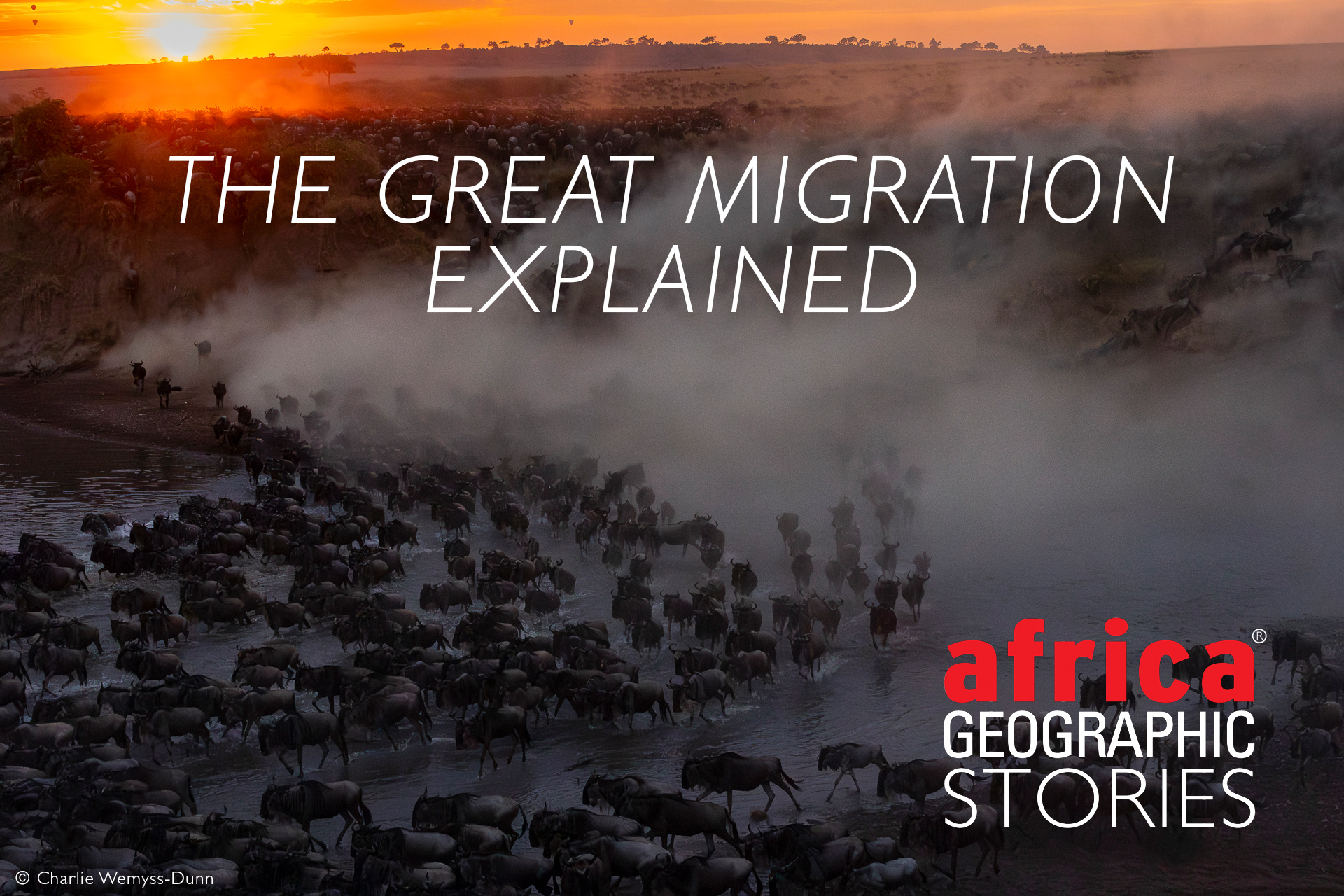
A never-ending story

![]()
The Serengeti and Maasai Mara ecosystems see huge herds of wildebeest and zebras migrating in a continuous search for the best food and water. Although this journey follows a similar annual route, exact timing varies based on rainfall.
When the rains beckon, the wildebeest go. In spite of the big cats in waiting, or the rivers thick with crocodiles, they diligently follow their inner compass in a never-ending circular journey.
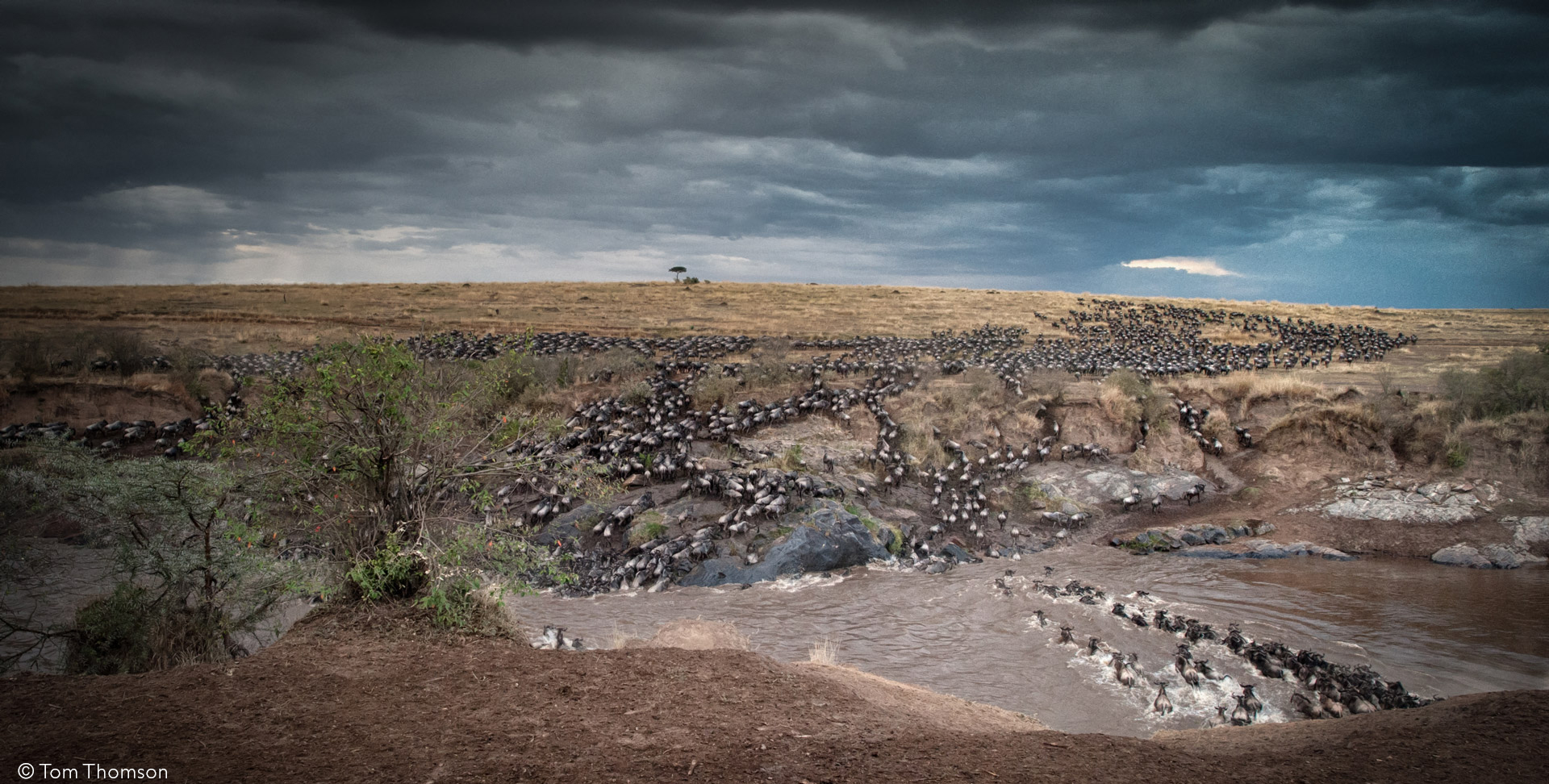
The Great Wildebeest Migration is the second largest overland migration in the world, with wildlife travelling a total of 800km or more during each cycle. The magnificence of the event lies in its magnitude. Between 1.3 and 2.5 million wildebeest, as well as zebra and other species, plod or canter across Tanzania’s Serengeti National Park and Kenya’s Maasai Mara National Reserve in search of good grazing. And if you are lucky, you get to go along for the adventure.
The herds follow a clockwise migration through Tanzania’s Serengeti ecosystem. In February and March, they give birth on the nutrient-rich southern plains, including in and around the Ngorongoro Conservation Area. From there, they move north through Serengeti National Park and the Maswa Game Reserve, with some splintering off into the Grumeti Reserves in April and May, while others continue through the Central Serengeti. By July, the herds converge in the Lamai region along the Mara River, straddling the Kenya-Tanzania border, where dramatic river crossings peak in August and taper off by the end of September or mid-October. Most of the herds do not fully cross into Kenya but linger along the river’s edge. In October, as southern rains begin, the herds start their return journey via the Central Serengeti and the Loliondo Game Controlled Area on the park’s eastern boundary. By December and January, they are back in the south, ready to begin the cycle again.
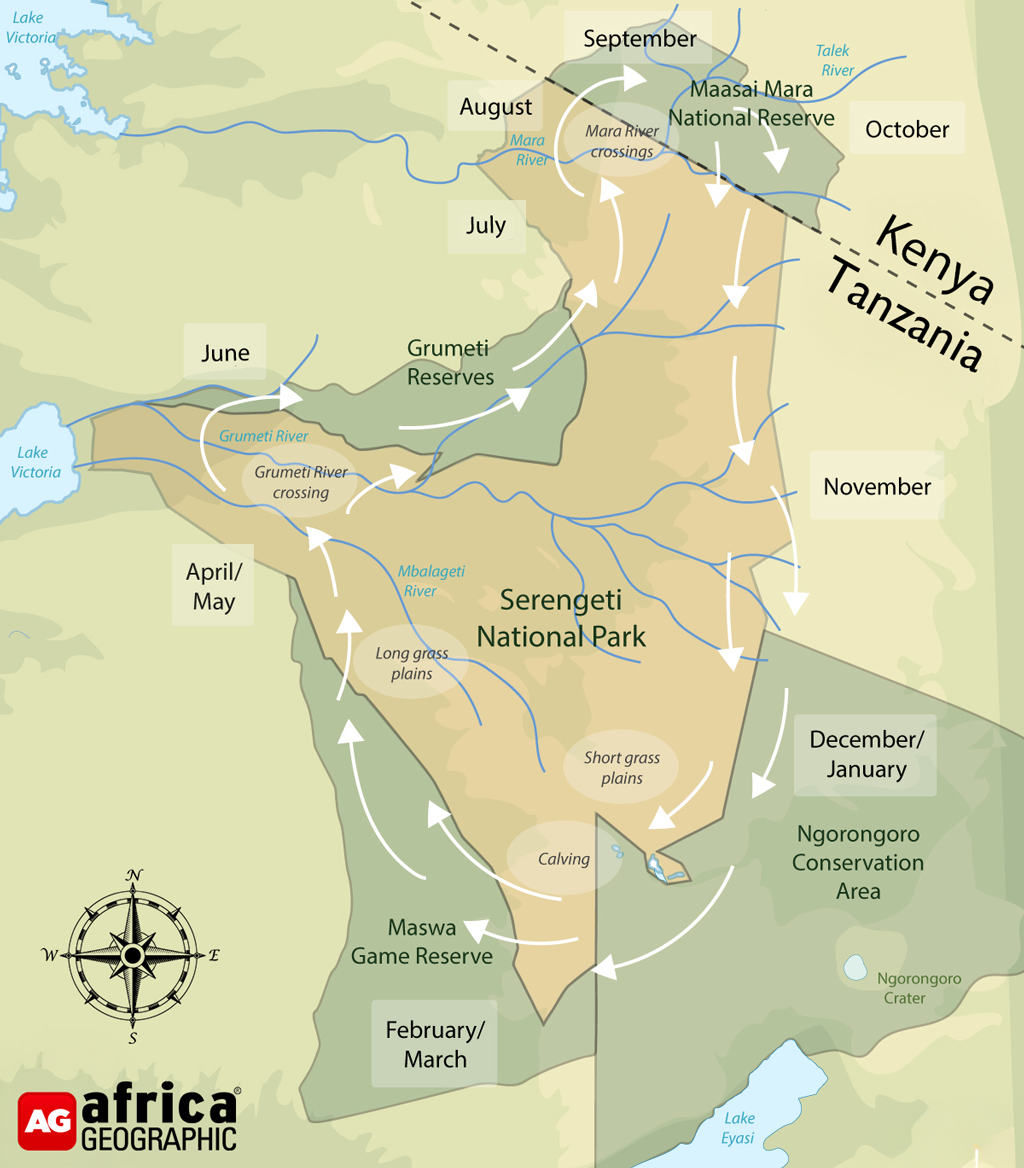

During the migration, about 250,000 wildebeest and 30,000 zebra die every year as a result of predation by carnivores, drowning, thirst, hunger, and exhaustion.
And following the herds is another migratory species – human safari die-hards, who revel in the drama and magic of this, the Greatest Show on Earth. This is no cookie-cutter African safari, as nature does not keep Swiss time, and even the well-documented river crossings are not predictable as to when and where. In fact, it’s the unpredictability that is the drawcard, and experienced travellers and guides know how to enjoy the many layers of bush life while waiting for the dramatic river crossings and predator action.
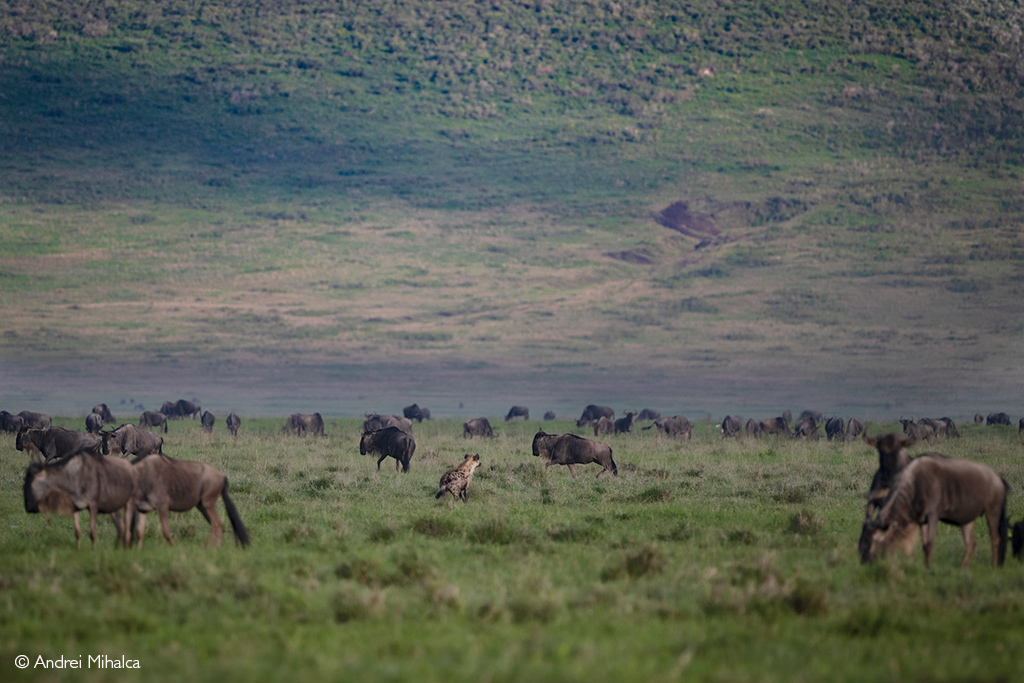
Follow the Great Wildebeest Migration
Rainfall drives the event, so tracking the herds is not an exact science, but the same general pattern plays out each year.
JANUARY:
Rains in the southern Serengeti plains bring nutrient-rich grass, beckoning the herds to the Ndutu area. If you want to find the wildebeest in January, Naabi Hill and Lobo are the places to look. Many females in the herd are heavily pregnant at this point, and moving towards greener grasses is of top priority. These fertile plains, formed by volcanic activity in the Ngorongoro region, produce short, mineral-rich grasses that thrive during the rainy season but dry up quickly when it ends. Their high nutritional value makes them especially attractive during calving season, when the herds instinctively seek out the best grazing to support their young.
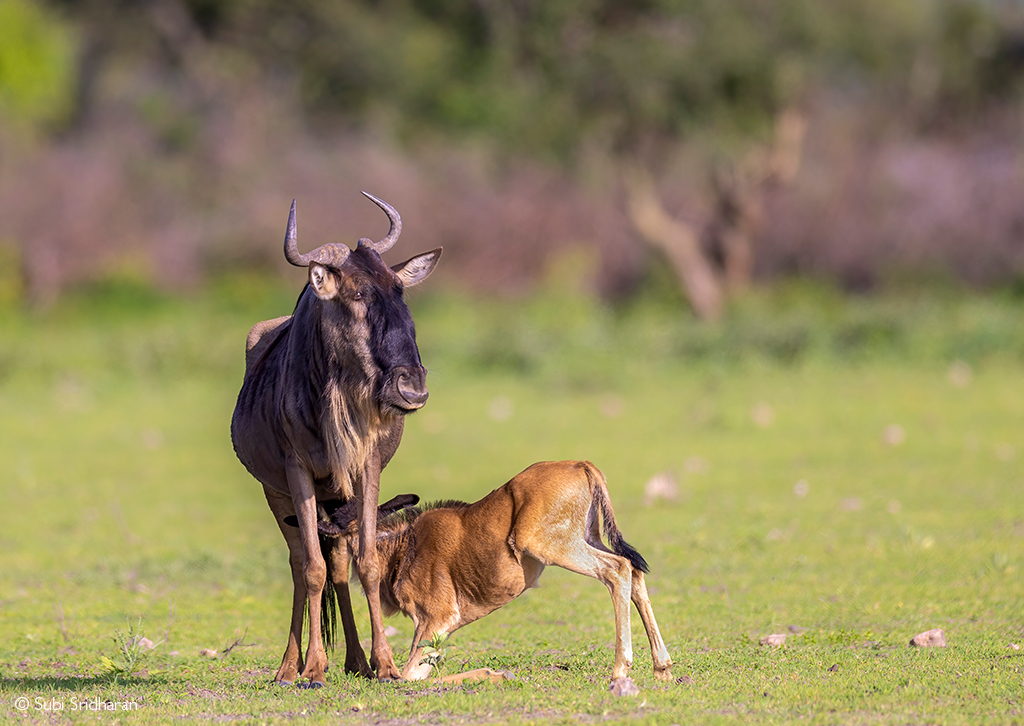
@subisridharan
FEBRUARY:
Every year, half a million wildebeest are born on the Serengeti plains, and February is the month with the highest birthing rate, sometimes seeing as many as 8,000 born each day.
The abundant new grass makes the area around Lake Masek and Lake Ndutu the ideal place for the wildebeest to give birth. The herd will stay put for a while in the southeast Ndutu area after the calves are born, before heading north in a clockwise direction.
Calving season means adorable wobbly babies finding their legs – a bonus for predators, who do not play nicely. If you want to see a wildebeest just hours old, your best chance is to go out at midday when they typically give birth, to allow the babies the time to gain strength before nightfall.
The Serengeti also boasts a particularly healthy lion population, with over 3,000 lions in the reserve. This is of considerable significance when you realise that these big cats are not faring as well across the African continent.
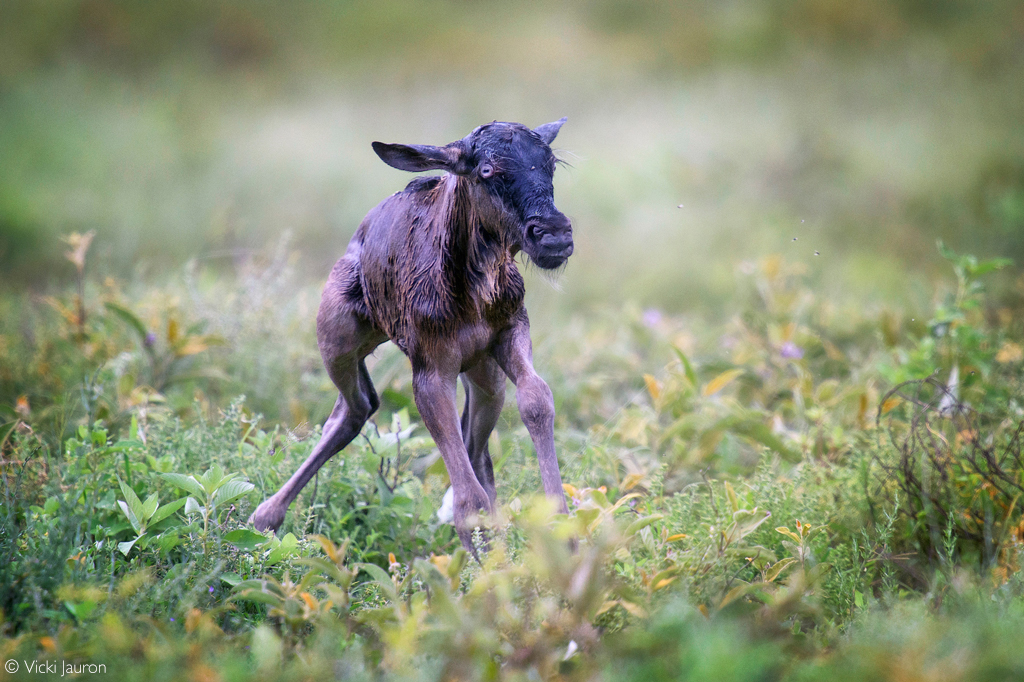
MARCH:
The mobile camps in the Serengeti provide an up-close and personal experience of the migration. You can find the herds in the Ndutu and Kusini Maswa region, in the southwest of the park. Having the babies in tow means they move a bit slower. And be prepared for some afternoon rainfall in March.
APRIL:
If you visit in April, you are going to need your rain jacket. The herds amble from the Ndutu region, past the Simba Kopjes, in the direction of Moru. The herds have now split into large groups, rather than the massive concentrations that stretch as far as the horizon. Simba Kopje is where the lions are, and it’s worth spending some time searching for lions. The wettest part of the day is the evening. The rainfall makes the plains slippery, and vehicles without 4×4 mode will struggle to go anywhere. While some wildebeest herds continue their march through the Central Serengeti, some head further west into Grumeti Reserve.
MAY:
For those wildlife photographers looking for action shots, set your sights on May in the Serengeti. The ‘long rains’ keep on going throughout the month. And as the calves get bigger and stronger, the distances the herd covers get longer. You’ll most likely find them between Moru and Makoma, moving north.

JUNE:
By June, the rains have abated somewhat, and the herds have spread out. The front-runners have already reached the Mbalageti River. But those bringing up the rear could still be as far back as the southernmost corner of the Simiti and Nyamuma Hills. The herds are now often in long lines as they head north.
JULY:
July is mating season in the Serengeti. You can find the herds in the Grumeti Reserve, in the west of the Serengeti, and moving past Fort Ikoma. Crossings of the Grumeti River are worth hanging around for, but this area is vast and relatively underdeveloped with lodges, so river crossings are harder to find.
Additionally, the Grumeti River lacks the volume of water that the Mara River possesses, and its crossings are not as spectacular. The herds graze their way northward as they move toward the Maasai Mara in Kenya. This is a transborder event.

AUGUST:
Come August, the herds have made their way up to the northern Serengeti and face their biggest challenge yet: the Mara River. The river flows through the Maasai Mara into the Serengeti. And while the gushing murky waters are captivating, they are also possibly responsible for the highest death toll en route, killing many thousands of wildebeest.
Sometimes the herds plunge en masse off steep banks in their desperate attempts to get across the river, or after being spooked by lions, and the fall alone will kill many individuals. Others drown as they are crushed by the sheer volume of panicking wildebeest trying to scramble up the equally steep banks on the other side. Every death means dinner for crocodiles, birds and fish – such is nature’s bounty.

And amidst the panic, the dust and the noise, the big cats and hyenas pick off the stragglers and the injured. Be warned that aside from the massive herds, the river crossings also attract large volumes of tourists, who congregate at strategic points to witness this spectacle.
There is no class system here, as privately guided wealthy couples in open Land Rovers jostle for the best views with budget backpackers crammed into minivans with pop-up roofs.


SEPTEMBER:
You can catch the tail end of the Mara River crossing or go see the herds out in the vast rolling grasslands of the Maasai Mara, where their numbers are like flies in places. Pack your hat, because the weather will be warm, sunny and dry.
OCTOBER:
Although Mara River crossings can stretch into October, usually this month ushers in a scene of casual grazing in the Maasai Mara. The push is over, and the fresh grass is the reward. For the survivors, that is.

NOVEMBER:
What is known as ‘the short rains’ begins in November, triggering another move, as the herds leave Kenya and move south to western Loliondo and the Lobo area in Serengeti National Park. Whether it rains in November or not is nature’s call. But pack some extra jerseys for the cooler weather. At this point, the herds organise themselves into smaller family groups and get on with the serious business of grazing.
DECEMBER:
By December, the herds are back in the south of Serengeti and towards Ngorongoro Conservation Area, and the first act begins all over again.

River Crossings
When people say they’ve come to see the Great Migration, they often mean they have come to see the river crossings. Watching the wildebeest hurl themselves into the water, one after the other, in a flurry of panic, sends a surge of adrenaline through the most seasoned bush-junkie. Watch this dramatic video of a Mara River crossing.
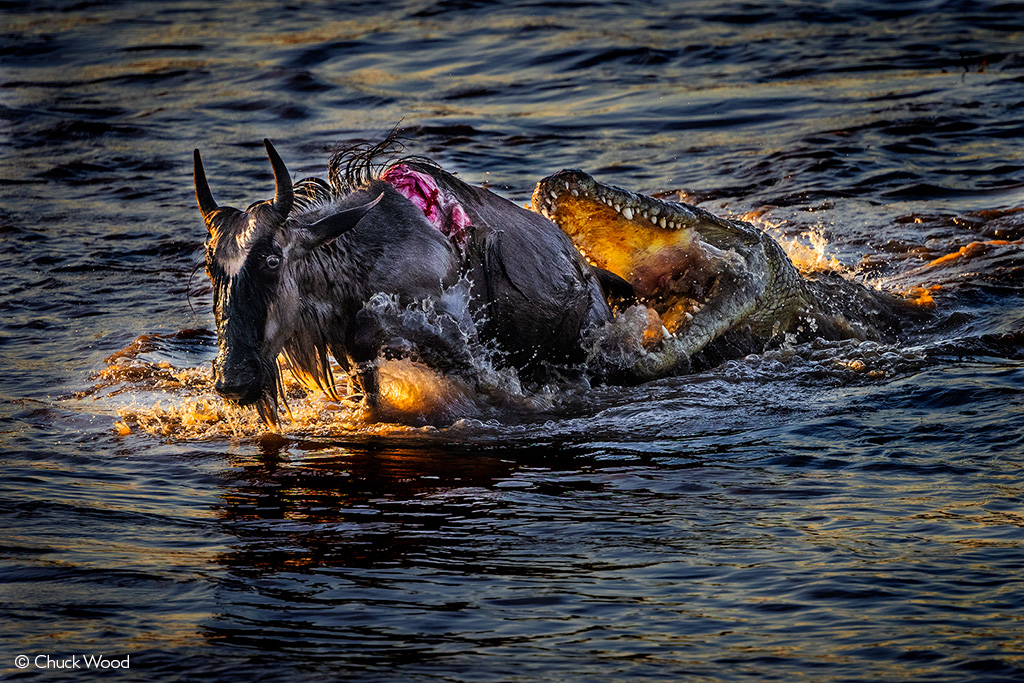
The river crossings are the scenes we’ve all watched on Planet Earth – the chaotic clamber of wildebeests, zebras and a few antelope species across turbulent crocodile-infested waters. And then, of course, you have the lions waiting amongst the riverine shrubs to ambush unsuspecting victims. For those of us with limited time and rudimentary camera equipment, it can be challenging to capture the full impact of thundering hooves, the frantic urgency to get to the other side and the drama of predations. Sometimes, the best strategy is to put the camera down and watch and absorb the drama unfolding before you.
Avoiding the tourists
Avoiding tourists is somewhat of a sport in the Serengeti and Maasai Mara, particularly during the peak safari season. If you are the tourist who skips the Eiffel Tower and seeks out that artisan cheese store in the back alleys of Paris, then perhaps give the Mara River crossings a miss, and opt for the vast herds visible in other areas during the green season.
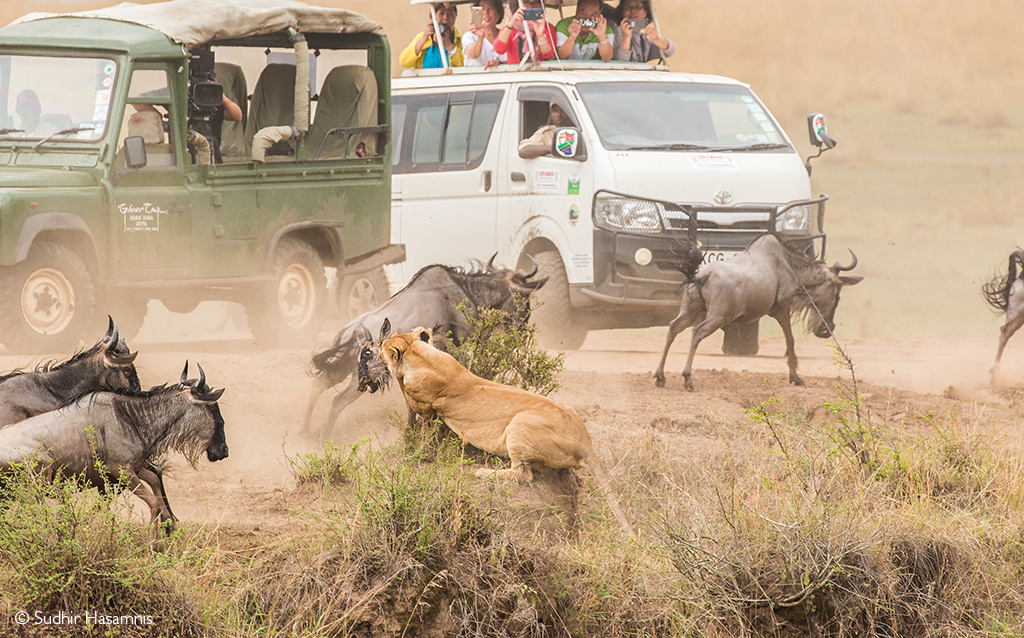
The rainy season, from late March to late May, offers up a less crowded Serengeti, as the herds move into the western part of the park. The mass of animals moving across the plains is captivating, but what you are really on the lookout for is a hunt. And the open plains give you prime viewing.
Moving away from the herds and following a pride of lions has its own bittersweet rewards. The predators face struggles of their own out on the plains: defending their territories, protecting their cubs, and nursing the battle wounds from a particularly hard hunt.
Just because it is the rainy season doesn’t mean it will rain. And if it does, it might not be a continual downpour. Again, the whims of the wild. As a bonus, catching the lodge off-season means less pricey accommodation.
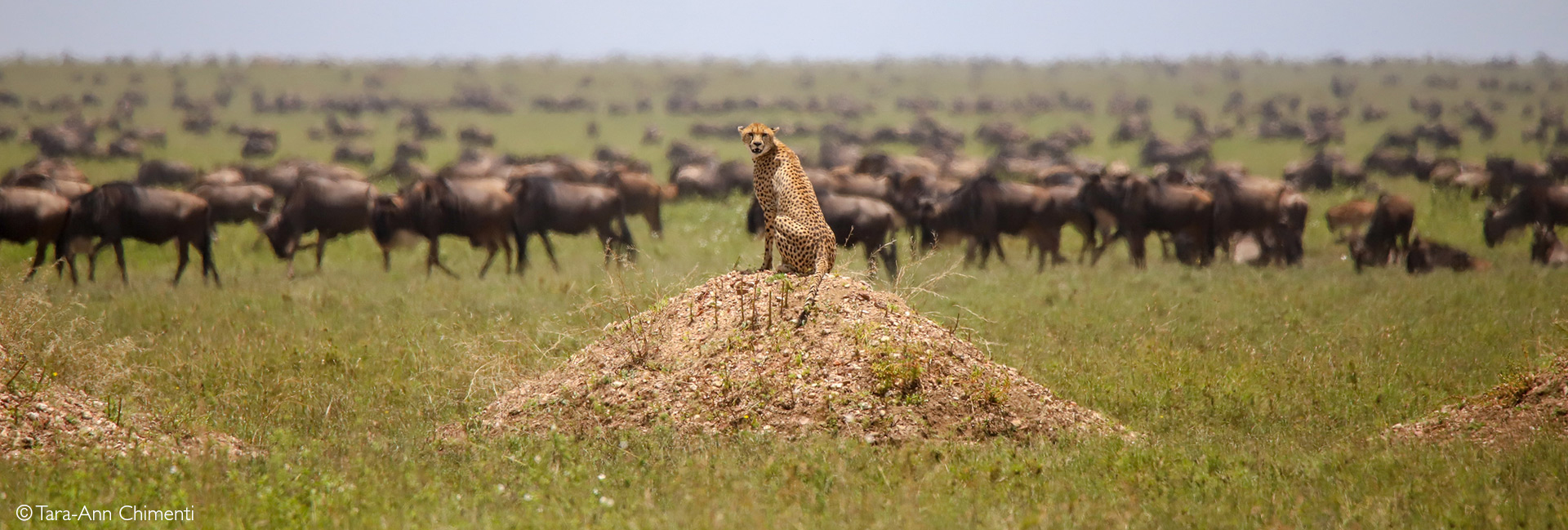
Avoiding tourists is more of a challenge in the Mara; the reserve is smaller and as soon as the herds arrive, so do the crowds. The trick here is to stay in one of the private conservancies bordering the reserve. They are close enough to make day trips to see the herds doable, and it means fewer crowds back at camp. These private conservancies can offer activities not permitted in the parks, such as night drives and bush walks.
 Want to see the Great Wildebeest Migration for your next African safari? Browse our top Great Migration safaris.
Want to see the Great Wildebeest Migration for your next African safari? Browse our top Great Migration safaris.
Top tips for witnessing the Great Migration:
- Decide what you want to see the most: this will impact the timing and location of your visit. Broadly, the choices are river crossings, massive herds as far as the eye can see or calving. You will enjoy predator action at all times.
- Choose your lodge carefully because easy access to the herds is vital. You don’t want to spend hours getting to and from the best locations, eating the dust behind a long line of other vehicles.
- If you seek privacy and exclusive wildlife encounters during the migration, choose a lodge in one of the conservancies neighbouring the parks. Alternatively, consider visiting during the ‘secret season’.

The Closing Curtain
If you think about it, the wildebeest is a rather understated animal, zoomed past on most safaris to get to something ‘more exciting’. It’s rather awesome that there is a show that puts them on the centre stage. And, with a bit of planning ahead, the front row seats are yours.

Resources
- The vast Serengeti in northern Tanzania is home to an extraordinary amount of wildlife and plays host to the greatest show on Earth – the Great Migration. Read more about Serengeti National Park here
- Safari report-back: Simon Espley’s luxury Serengeti safari during the wildebeest migration brought drama, excitement, awe and wonder. Check out Simon’s report on Serengeti here
- Ngorongoro Conservation Area, centred on Tanzania’s famous crater, is a spectacular safari destination of abundant wildlife & ancient history. Read more about Ngorongoro here
- Kathy West’s trip to Maasai Mara for a week of slow-paced photography brought intimate wildlife encounters & a safari like no other. Read about Kathy’s unforgettable Maasai Mara safari here
- This interesting introduction to Kenya’s Maasai Mara will have you contacting Africa Geographic to book your next African safari. Read more about Maasai Mara here
- Tanzania is a bucket list destination for safari enthusiasts & wildlife lovers. Here’s the lowdown on its four unique safari circuits. Read more about Tanzania’s safari circuits here
- The wildebeest, star of the Great Migration, is one of Africa’s toughest animals. Seeing this comical antelope on safari is very entertaining. Read everything there is to know about wildebeest here
To comment on this story: Login (or sign up) to our app here - it's a troll-free safe place 🙂.![]()




